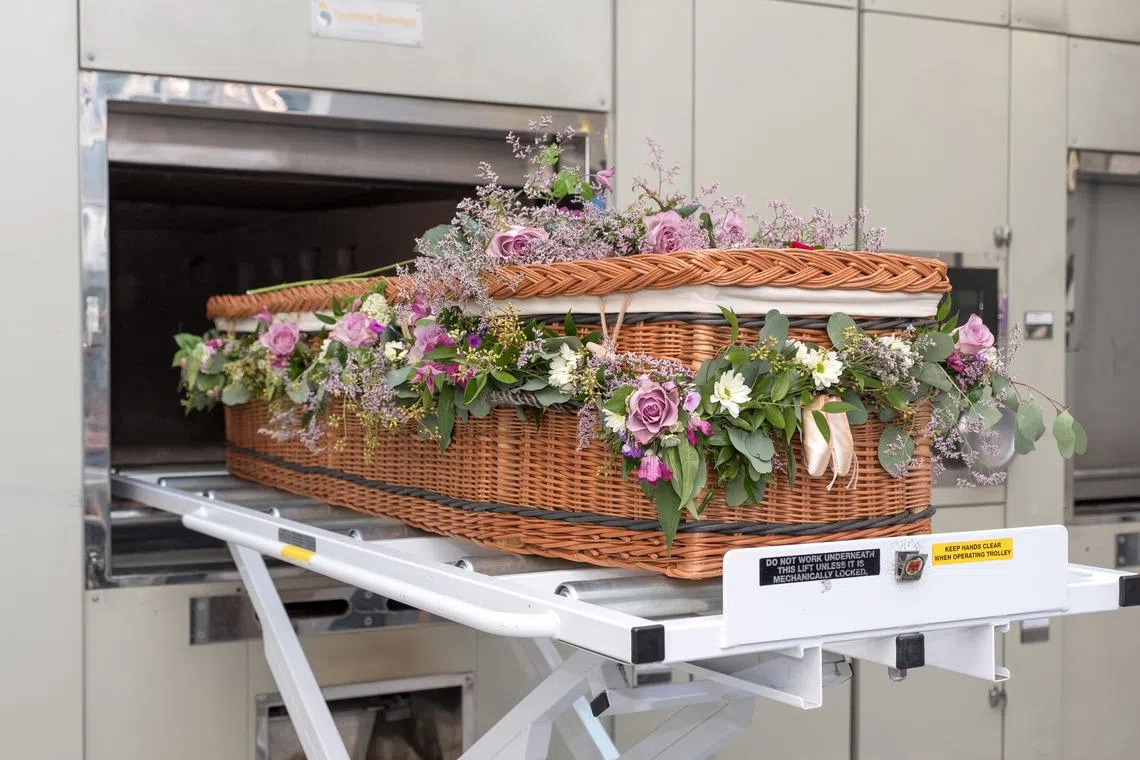More turn to sea burials and cremation in China as cemeteries become crowded
Sign up now: Get insights on Asia's fast-moving developments

In 2021, the cremation rate reached nearly 59 per cent, up from 47 per cent in 2015, according to the Chinese Ministry of Civil Affairs.
PHOTO ILLUSTRATION: UNSPLASH
Follow topic:
As China continues to rapidly urbanise and age, the authorities in the country have forecast that available cemetery space will run out soon. For this reason, many are turning to sea burials and cremation.
In 2021, the cremation rate reached nearly 59 per cent, up from 47 per cent in 2015, according to the Chinese Ministry of Civil Affairs.
The government is also encouraging sea burials and cremation by offering cash rewards to people who choose to scatter their relatives at sea or bury their ashes in an “ecological” manner.
These could include biodegradable containers.
In April and May, several Chinese cities are organising sea burials.
The local civil affairs authorities are covering the service fee in a bid to promote green burial practices, according to the Global Times.
For instance, Hohhot in northern China’s Inner Mongolia province will hold a collective burial ceremony from May 9 to May 10.
It is to be held about 1,000km away near the coastal city of Qingdao, in eastern China’s Shandong province, according to a government source.
China’s burial problem is particularly felt in the cities.
Grave plots are becoming increasingly scarce, and can cost more than 100,000 yuan (S$19,400) each.
In Shanghai alone, the authorities forecast that if current burial trends continue, the city will run out of cemetery space within 15 years.
China as a whole recorded 10.41 million deaths in 2022, according to the National Health Commission.
Those aged above 60 accounted for 18.9 per cent of deaths at the end of 2021, the commission said, adding that that rate is expected to cross 30 per cent by around 2035.
In a culture that worships ancestors, a land burial with a tombstone is considered an important part of a person’s final rites.
Tending to those sites is a fundamental way of showing filial piety to those who have passed on.
This is especially so in April, when the Chinese observe Qing Ming, or the tomb-sweeping festival.
People travel to their ancestors’ graves to clean the tombstones and burn offerings for the afterlife.
But state media has started to popularise the term houyang bozang, which means “thick care, thin funerals”.
It is arguing that filial piety is best shown in life, not the afterlife.
In addition, the cost of private sea burials is much lower, at 10,000 yuan. That figure doubles if several family members want to attend, according to a report in The Guardian.
Yet, not everyone is convinced.
Some like Mr Peng Xizhe, director of the Fudan University Centre for Population and Development Policy Studies, have suggested providing people with both traditional and non-traditional options, so they can choose which they prefer.
“We need to keep a balance between respecting traditional Chinese culture and saving land and resources,” he said.

